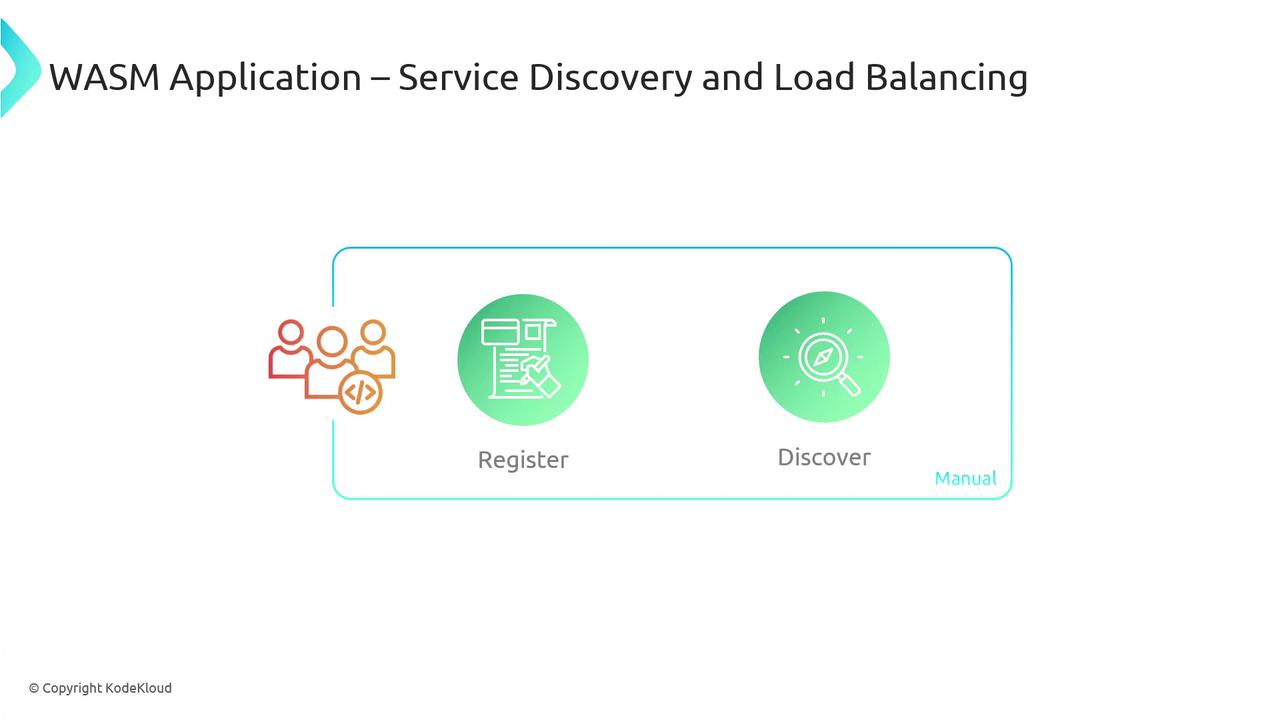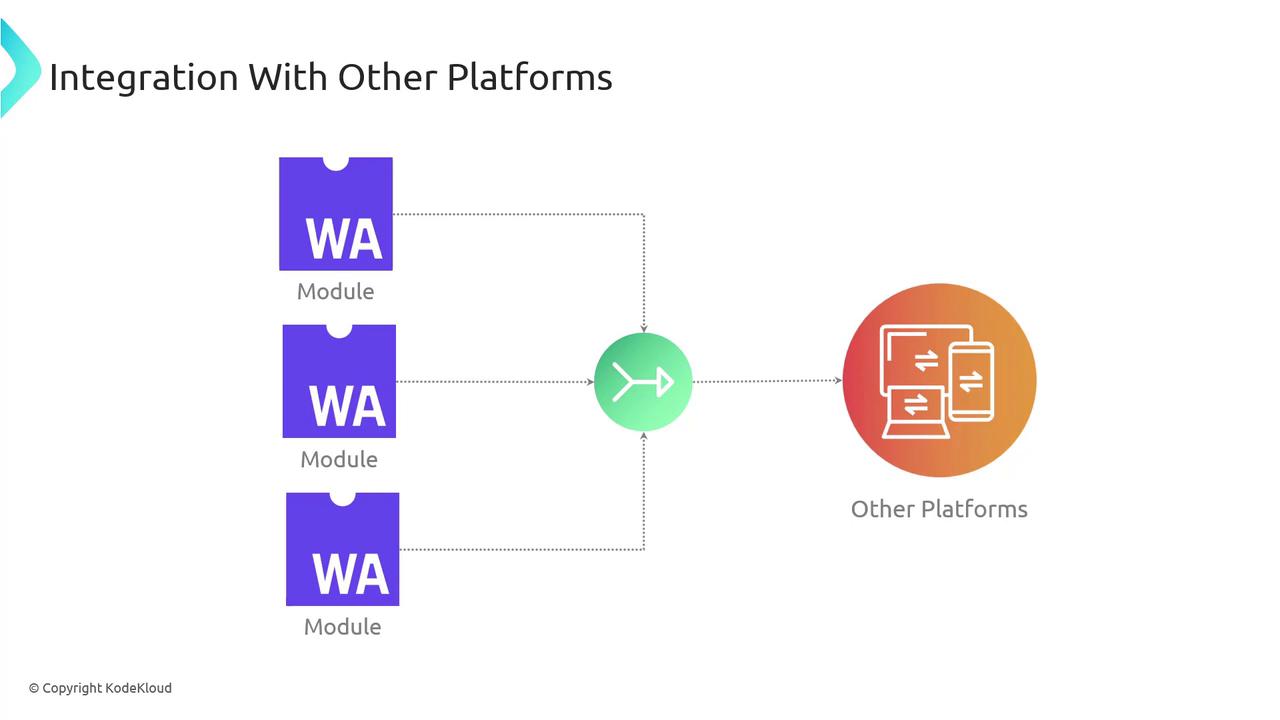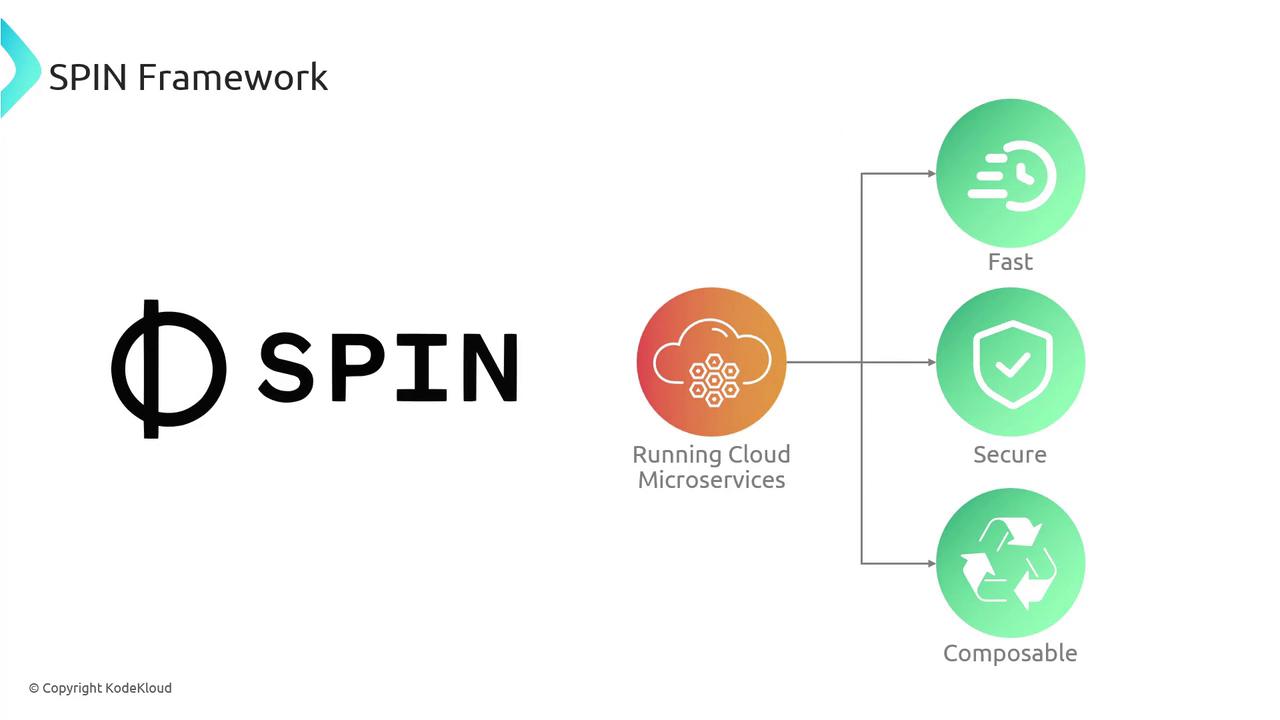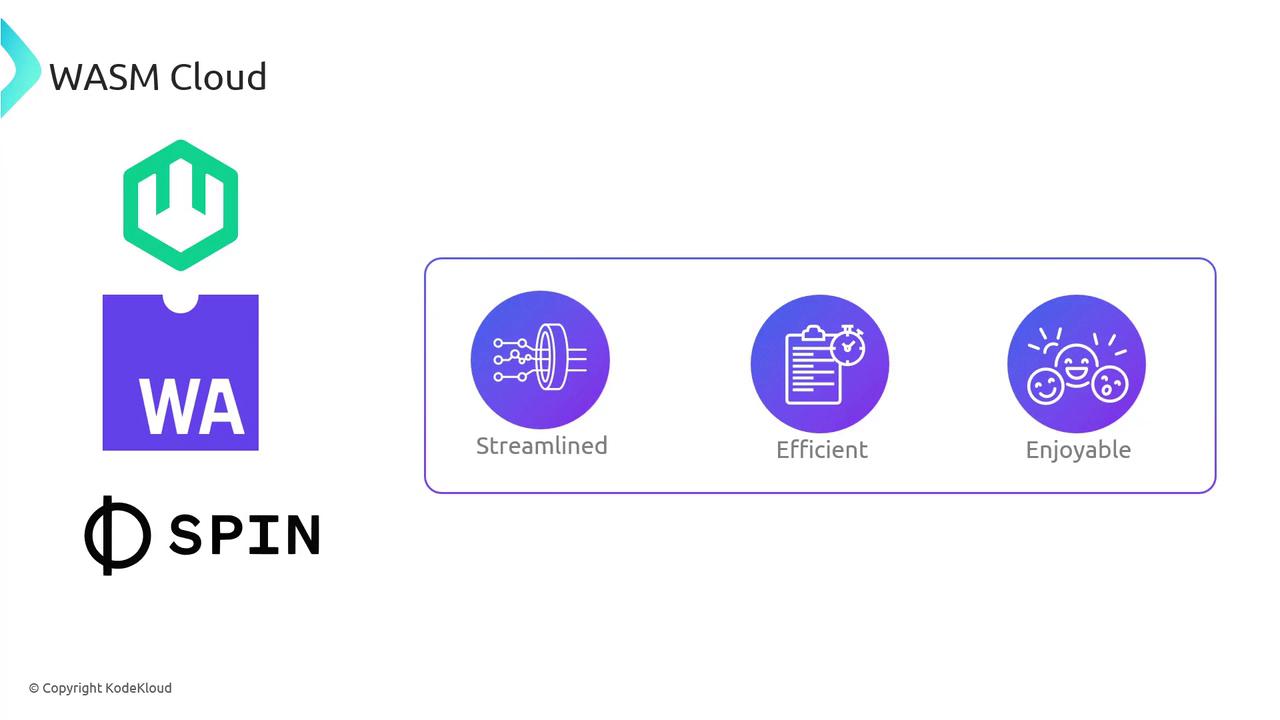Exploring WebAssembly (WASM)
Future WebAssembly in Cloud
WASM Tools and Frameworks WasmCloud Fermyon Spin framework
In the rapidly evolving world of WebAssembly (WASM), developers unlock high-performance, portable modules for diverse environments—from cloud to edge to browsers. However, without a dedicated framework, common hurdles emerge:
- Manual service discovery and load balancing
- Inconsistent inter-service communication
- Ad-hoc security implementations
- Tight platform coupling
- Extensive boilerplate setup
Below, we explore each pain point and then introduce two powerful solutions—Fermyon Spin and WasmCloud—that streamline your WASM microservices.
Key Challenges in WebAssembly Development
1. Service Discovery and Load Balancing

Manual registration and discovery often lead to misconfigurations and scalability bottlenecks, especially as services grow.
Note
Automating service mesh features reduces human error and accelerates deployment.
2. Inter-Service Communication
Without a standard messaging protocol, each service pair requires custom wiring:
// Setup a direct channel between two WASM services
setupWasmCommunication("serviceA", "serviceB");
sendMessage("serviceA", "serviceB", message);
This pattern quickly becomes inconsistent and hard to maintain across dozens of microservices.
3. Security
Ad-hoc authentication and encryption may drift from best practices, introducing vulnerabilities.

// DIY authentication and encryption in WASM
authenticateWasmUser(username, password);
const encryptedData = encrypt(data, encryptionKey);
4. Platform Integration
Directly embedding platform-specific code couples your modules tightly:

// Platform-specific WASM integration
if (platform === "platformA") {
// PlatformA-specific logic
} else if (platform === "platformB") {
// PlatformB-specific logic
}
5. Boilerplate Overhead
Spinning up each service often requires repetitive setup, slowing down feature development:
// Example boilerplate for a new WASM service
setupWasmService("serviceA");
setupWasmDatabaseConnection("serviceA_DB");
setupWasmLogging("serviceA_logs");
Warning
Excessive boilerplate can lead to inconsistent deployments and makes refactoring difficult.
Introducing Robust Solutions
Imagine a streamlined workflow where service mesh, secure messaging, and deployment are automated. Two frameworks stand out:
| Framework | Primary Use Case | Key Features |
|---|---|---|
| Fermyon Spin | Edge and cloud microservices | Fast build & deploy, WebAssembly component model, secure defaults |
| WasmCloud | Distributed, multi-environment apps | Built-in service discovery, encryption, actor-model, lightweight hosts |
Fermyon Spin
Spin is an open-source CLI-based framework for building, deploying, and running WASM microservices. It emphasizes:
- Fast scaffolding and local iteration
- Secure defaults (e.g., sandboxed WASM)
- Composable components aligning with the WebAssembly Component Model

Quick start with Spin CLI:
# Install Spin
curl https://spin.fermyon.dev/install.sh | bash
# Scaffold a new Spin application
spin new hello-spin
# Build and run locally
cd hello-spin
spin build
spin up
WasmCloud
WasmCloud is a runtime and toolkit for distributed computing that runs anywhere—cloud, edge, IoT, or browser. It offers:
- Enterprise-grade service discovery and load balancing
- Secure inter-service messaging out of the box
- Actor-model abstraction reduces boilerplate

Start with WasmCloud in minutes:
# Install wasmcloud host
curl https://wasmcloud.dev/install.sh | bash
# Launch a host
wasmcloud host start
# Deploy an actor (WASM module)
wash ctl start actor --image my-actor.wasm
Conclusion
By adopting Fermyon Spin or WasmCloud, you eliminate manual service discovery, standardized messaging, robust security, and excessive boilerplate. These frameworks let you focus on core business logic while ensuring your WebAssembly microservices are scalable, secure, and maintainable.
Links and References
Watch Video
Watch video content